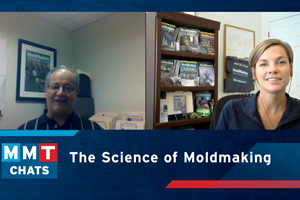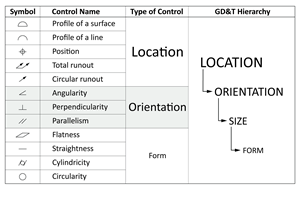VIDEO: What Is Visual Search and Why Should a Mold Builder Care?
Learn the three types of visual search, including where a mold builder can apply visual search within their current processes and the key benefits.
Matt Judge, vice president of sales at VizSeek, breaks down the three types of visual search technology and how mold makers can use them to speed up the quoting process and avoid duplicating work.
Transcript
Visual search is a technology that allows companies to find files in their database using shape. Up until now, people could search by text, by number or by some kind of attribute. But if the target file that you're looking for is a shape that you recognize, but you can't remember the name or the keywords, you have a problem. You haven't been able to search by shape until now, but now, you can with this technology. Visual search technology takes many forms when it comes to products, and when it comes to engineering, there are three different types.
The first type is for consumer goods, which we call image-to-image. That takes a photograph and defines a photograph. That works really well if somebody is looking for consumer goods because there are a lot of photographs done by the marketing department and lots of photographs uploaded by users, so there’s a lot of data flowing.
The second type would be 3D, the 3D that encompasses 2D drawings. So, that is engineering; that's strictly within an engineering environment. That software usually comes attached to a CAD program. So, if you're a customer of this CAD supplier, they say, “Oh, by the way, we also have a visual search tool.” You can use that to find 3D drawings. What does that do? It allows you to avoid duplicated work. So you can start a drawing, and instead of spending a couple of days on it, now you can do a search, and it'll pull up any existing work that looks like that could save you a vast amount of work.
The third type is what is called cross-platform. Cross-platform encompasses both image-to-image and 3D-to-3D, plus everything in between. So you can take a hand sketch and find a 2D drawing, take a PDF and find a 3D model, take a photograph and find a 3D, and cross any of these platforms. The reason that matters is that the input — in other words, what are you using to search with — might be a photograph, but the file you want to find is a 2D drawing. You don't have a 2D input in the field; you don't have a 3D drawing when you're trying to identify this part. That's why crossing platforms creates great advantages for manufacturers.
In the moldmaking industry, there are a number of applications. You can start on the engineering and design side where you get an inquiry, and you're saying, “Okay, I'm pretty sure we've made this before.” You can do a visual search and pull up existing work to avoid duplicating what you've already done. One of the greatest advantages is the quoting process. So when somebody sends an email with attached files, while you're looking at the email, the visual search software will jump into your database and grab any shape that looks like the shape in the attached drawing. Within a couple of seconds, you can see everything you've already made on your screen that looks like this. We have a customer that does a lot of quoting and uses our technology for that, and they can document about a 40% increase in profit margins since they have started using our software, simply because of the speed to market that this brings.
The key benefit is speed. You can quote faster, find data faster and get the job done faster once you've got the business. You can get back to your clients faster. Everything has to do with speed. Faster work means higher profit margins. End of story.
Related Content
Ten Things Mold Builders Should NOT Do
What you don’t do can be just as important as what you do, sometimes even more so. One thing great mold builders do is take note of what gets in the way of their success and stop doing it.
Read MoreMMT Chats: The Science of Moldmaking, Part 1
MoldMaking Technology Editorial Director Christina Fuges chats with Don Smith, North American Senior Tooling Engineer for Scholle IPN in Northlake, Illinois about the future and science of moldmaking.
Read MoreHow to Select a Mold Temperature Controller
White paper shares how cooling channel analysis, which collects maximum pressure drop, total flow rate and heat dissipation, eases the performance evaluation of mold temperature controllers.
Read MoreTolerancing in Mold Design, Part 2: Using GD&T to Address Conventional Tolerancing Issues
Mold designers can achieve a single interpretation of workpiece functionality when following the American Society of Mechanical Engineers Geometric Dimensioning and Tolerancing standard.
Read MoreRead Next
How to Use Strategic Planning Tools, Data to Manage the Human Side of Business
Q&A with Marion Wells, MMT EAB member and founder of Human Asset Management.
Read MoreAre You a Moldmaker Considering 3D Printing? Consider the 3D Printing Workshop at NPE2024
Presentations will cover 3D printing for mold tooling, material innovation, product development, bridge production and full-scale, high-volume additive manufacturing.
Read MoreReasons to Use Fiber Lasers for Mold Cleaning
Fiber lasers offer a simplicity, speed, control and portability, minimizing mold cleaning risks.
Read More.png;maxWidth=970;quality=90)








.png;maxWidth=300;quality=90)

















